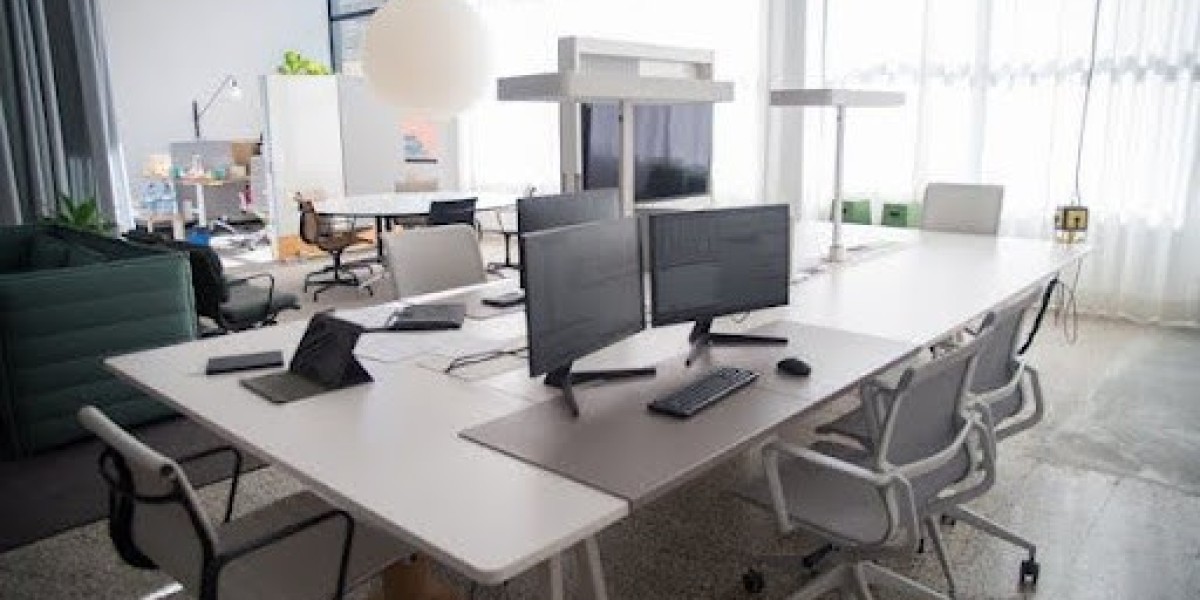Today’s workplace is changing fast. People need spaces that move with them, adapt to different activities, and encourage flexibility. With work now a blend of in-office, remote, and hybrid styles, multi-functional spaces are crucial. They allow people to work individually, gather for quick team huddles, or relax in a comfortable spot. This concept doesn’t just cater to changing work styles—it creates a dynamic, responsive office that engages people and encourages them to connect. Let us explore more about the agile environment for office renovation.
Why Flexibility and Adaptability Matter
Imagine an office with desks that can rearrange in a snap, chairs that work as both solo and team seating, and tables that can shift in minutes for group work. This flexibility makes it easy for employees to find the best spot for their task at hand. It’s a win-win for everyone. Instead of being locked into one area, they’re free to create the space they need, encouraging movement and collaboration throughout the day. This should be kept in mind during office renovation.
The great part about flexible furniture? It lets teams reshape the space however they like. A group might set up a team space in the morning, split up for individual work by afternoon, and come back for a quick debrief later in the day.
Seamless Technology Integration
Technology isn’t just an extra in a flexible office—it’s foundational. But it’s not about flashy gadgets; it’s about making life easier for everyone. A flexible office setup might include video conferencing capabilities, interactive screens, and wireless chargers, so employees can go from focused work to a meeting with a few taps.
Conference rooms equipped with the right tools let teams join video calls, present ideas, or collaborate virtually with offsite colleagues. It’s all about ensuring that technology serves people’s needs, so they don’t have to worry about setup or tech hiccups.
Imagine walking into a conference room and instantly connecting to the screen or video call without any issues. That smooth tech setup makes everything so much easier. Employees can focus on what really matters—connecting and getting their work done—without tech getting in the way. When the technology just works, it helps keep everyone engaged and productive, creating a space that supports their needs rather than adding extra hurdles.
The Comfort Factor
Comfort isn’t just a nice-to-have; it’s essential. When the workspace feels good, people can stay focused longer, avoid getting tired, and keep their energy up. Things like ergonomic chairs, adjustable desks, and well-planned areas can make a big difference in how people work and feel.
When a space is inviting, employees feel at home, and that comfort translates directly into engagement and productivity.
Consider adding lounge-style seating for more casual interactions, like brainstorming sessions or one-on-one meetings. These aren’t just “nice-to-haves”—they play a critical role in making the office a place where people actually want to spend their time.
Office zoning is a great way to make the most of a flexible workspace. It’s all about creating different areas that each serve a specific function. Think about having a quiet zone for deep concentration, a space for team brainstorming, and a relaxation area for recharging. By dividing the office into purposeful zones, you can create a space that works for whatever task needs to be done.
Real-Life Examples of Multi-Functional Spaces
Take conference rooms, for instance. With modular tables, movable seating, and built-in tech, they can shift from a meeting room to a training space or a quiet work area. This adaptability lets teams use the room for various purposes, maximizing its value.
Flexible Workstations: Workstations that adapt can support both group and individual work. Imagine desks with wheels for easy reconfiguration, or standing desks that encourage movement. It lets employees switch things up, going from individual tasks to group work as needed. When people have options, they’re less likely to feel restricted, which encourages creativity and satisfaction.
Casual Lounge Areas: Lounge areas aren’t just for breaks—they’re perfect for casual meet-ups, brainstorming, and even a little quiet solo work. With couches, small tables, and maybe a whiteboard or two, these areas invite people to gather informally.
Why Multi-Functional Spaces Work
Multi-functional spaces really make a difference for everyone. For teams, it’s about easily shifting to a space that suits collaboration. For individuals, it means having the freedom to pick a spot that helps them focus or relax when they need to. And for the company, it leads to higher engagement, better satisfaction, and a more positive, energetic office vibe.
With more people splitting time between home and office these days, multi-functional spaces give them a flexible, welcoming environment that works wherever they are.
Wrapping Up
Designing multi-functional spaces isn’t just about choosing the right furniture or decor. It’s about creating a space that truly supports the way people work today—comfortably, flexibly, and efficiently. From flexibility and comfort to technology and zones, these spaces help bring out the best in employees and their work. It’s a shift that makes the office somewhere employees want to be, a place where they feel they can work their best and find a setup that suits their tasks.









